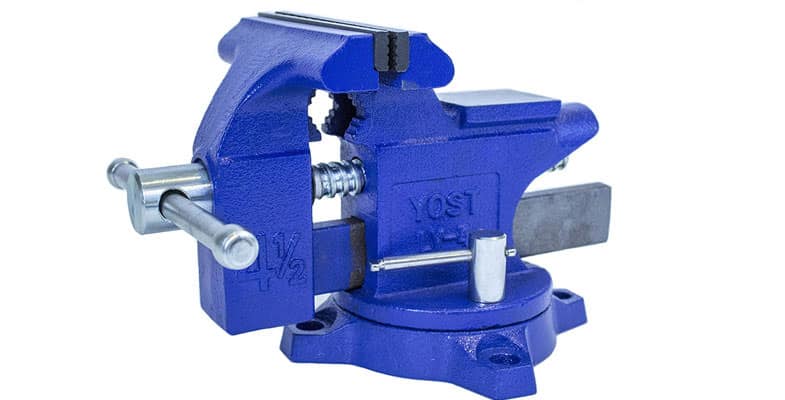The Best Bench Vices for All Precision Work
The bench vise is indispensable for processing wood and metals with precision. Let’s see the best models, prices, and features, buying the best bench vice suitable for your needs.
A bench vise is a necessary tool in any workshop, also perfect for DIY projects at home or in the garage. Fixed on the workbench, the vice allows you to hold the pieces in place to work them; for example, it is useful for welding, cutting, filing, engraving, and gluing.
We find the vices for wood and mechanics suitable for working metal pieces among the different bench vices. The mechanical vices are suitable for imparting greater strength and are completely steel or cast iron. While it is more difficult to work steel with a wood vise, it is also possible to work wood with some small tricks by purchasing a mechanical vise.
Table of Contents
How to choose a bench vise
Let’s see the main features of the bench vises that can help us choose the best one. First, we must understand what we have to work with, what types of materials, and what dimensions.
Materials
Professional bench vises for mechanics are made of steel or cast iron. These materials are the most resistant and can impart greater force, keeping the workpiece still. They are also suitable for working with a hammer.
Another feature is that they are heat-resistant materials, especially cast iron, and can be used to weld pieces or cut them with a flame without damaging the vice.
The vices for wood also consist of a metal body, but wood or other soft materials such as rubber in correspondence with the jaws are necessary to avoid leaving marks or, worse, ruining the pieces of wood.
Dimensions and Weight
When buying a vice, you must also carefully consider the size of the pieces you have to work on. There are vices for machining tiny pieces and others for larger pieces.
The larger the bench vise, the greater its weight. Consequently, the vice will be even more stable and offer the right support to hold the workpiece during processing.
Vice opening and Depth
In addition to the general dimensions of the vice, we must especially consider the jaws’ opening. For example, the maximum opening size, 6 inches, indicates the maximum size of the piece we can machine.
Similarly, the depth indicates the vertical space between the jaw’s opening and the vice’s base, for example, 3.5 inches. The piece to be worked on must be fixed so that most of it is taken inside the vice; thus, maximum stability is obtained.
Clamping pressure
Another key parameter is the clamping pressure. This is the maximum force we can exert on the piece we work on. The pressure is indicated in lbs; there are vices with a pressure of 220 lbs and others with over 4,000 lbs. Again, the choice depends on the material we have to work on, the size, and the type of work required.
Jaws
The jaws are the part that keeps the piece stationary. In screw-type bench visors, the jaws are opened or closed thanks to the screw’s rotation, moving the movable jaw away from or closer to a fixed jaw. The most common are the parallel bench vises, where the jaws act on the same line. On the market, we can also find corner vices or gooseneck vices.
The jaws in contact with the workpiece must be knurled to prevent the pieces from sliding. The jaws’ surface will be in wood or rubber in bench vises for working with wood. In any case, the jaws can be applied to the jaws, i.e., supports in other materials to adapt to the workpiece and avoid damaging it.
For example, we can use lead nibbles on a steel vice when we work on a piece of metal or wood or plastic nibbles to work on wood. This way, the bench vice is more versatile, and we can work with different materials with the same tool.
Fixing
You can fix the bench vice with special screws on the wooden work tables or with the screw clamp, a single body with the vice. The aim is always to obtain the maximum possible stability; the ideal would be to keep the vice always in the same position.
The workbench must be fairly stable and heavy, especially if we have to perform cutting, twisting, or hammer work.
Swivel base
The best bench vises are equipped with a swivel base. The base rotation offers maximum freedom during processing and allows us to work the piece on different angles without moving and repositioning it on the vice.
Anvil
Many models of mechanical bench vice also act as an anvil. Located in the vice’s fixed part, the anvil allows you to work the pieces with the hammer.
The best Bench Vises to buy
Below is the complete selection of the screw bench vices to be purchased, with their respective characteristics, technical data, and prices.
Product prices and availability are subject to change. Therefore, any price and availability information displayed on Amazon at the time of purchase will apply to purchasing any products.

